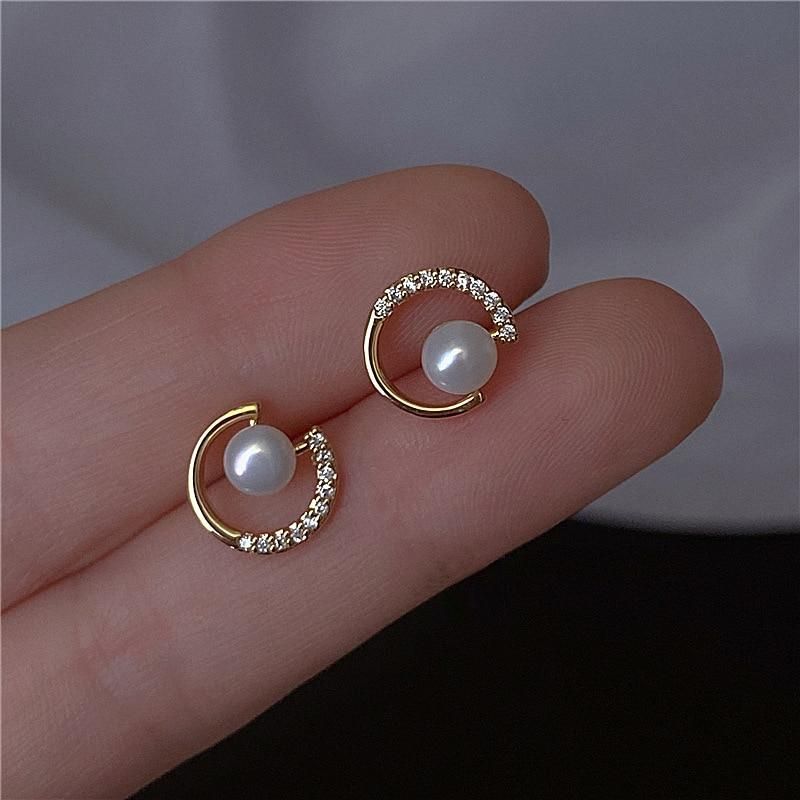The history of American Indian jewelry spans back centuries, showcasing a rich tapestry of tradition, culture, and craftsmanship. From ancient techniques to contemporary styles, this form of adornment holds deep symbolism and serves as a significant cultural expression for Native American tribes. The evolution of American Indian jewelry has not only maintained its cultural significance but also influenced modern design trends, making it a timeless art form that continues to captivate and inspire.
Tracing back to ancient traditions and techniques, the origins of American Indian jewelry reveal the skilled craftsmanship and artistic sensibilities of indigenous tribes. The use of materials like turquoise, silver, and intricate beading reflect the connection between nature and spirituality in Native American cultures. As we delve into the symbolism and cultural significance of these designs, we gain a deeper understanding of their role in tribal ceremonies and everyday life.
Moreover, notable American Indian jewelry artists have contributed significantly to the craft, leaving behind a lasting legacy that continues to inspire contemporary design. From traditional to contemporary styles, the evolution of American Indian jewelry is a testament to its enduring appeal and timeless beauty. This article aims to explore the diverse facets of this art form, shedding light on its cultural importance while celebrating its influence on modern fashion and design trends.
The Origins of American Indian Jewelry
Whether browsing through a curated collection in a museum or admiring pieces for sale at a local market, the history of American Indian jewelry is as rich and vibrant as the pieces themselves. The origins of this unique and culturally significant art form can be traced back to ancient traditions and techniques that have been passed down through generations.
American Indian jewelry has a long and storied history, with each tribe bringing its own distinct style and craftsmanship to the table. From the intricate beadwork of the Plains tribes to the distinctive silverwork of the Navajo, each piece tells a story that reflects the artistic heritage and cultural practices of its creators.
To gain a deeper understanding of the history of American Indian jewelry, one must appreciate the significance of these pieces within their respective tribal communities. For centuries, jewelry has played a crucial role in ceremonial and everyday life, serving as both adornment and symbol. It serves as a form of storytelling, conveying important cultural beliefs and values through intricate designs and meaningful symbolism.
The significance of American Indian jewelry reaches far beyond mere fashion; it is an embodiment of tribal identity, spiritual beliefs, and artistic expression. The techniques and traditions passed down through generations continue to inspire contemporary designers while honoring the timeless beauty and legacy of this storied craft.
The Symbolism and Cultural Significance of American Indian Jewelry Designs
The history of American Indian jewelry is rich with cultural significance and symbolism, reflecting the traditions and beliefs of indigenous peoples. From intricate beadwork to elaborate silver pieces, each design carries a deeper meaning that is woven into the fabric of Native American identity. Here are some key aspects to consider when exploring the symbolism and cultural significance of American Indian jewelry designs:
- Symbolism in Designs: Many American Indian jewelry pieces feature symbols that hold special meanings within their respective tribes. For example, the use of feathers may symbolize honor or respect, while the use of bear claws or animal motifs can represent strength and courage. These symbols often connect wearers to their heritage and serve as a way to express their cultural identity.
- Spirituality and Beliefs: American Indian jewelry designs often incorporate elements inspired by spiritual beliefs and traditions. For instance, turquoise, a highly valued stone in Native American culture, is believed to bring protection and healing properties. The incorporation of such materials reflects a deep connection to the natural world and spiritual realm.
- Tribal Traditions: Each tribe has its own distinct style and motifs when it comes to jewelry design. For example, Navajo jewelry is known for its use of sterling silver and intricate stamp work, while Zuni jewelry is famous for its inlaid stone designs. These unique styles are informed by centuries-old traditions passed down through generations, making them an essential part of tribal identity.
The symbolism and cultural significance embedded in American Indian jewelry designs offer a glimpse into the rich heritage of indigenous peoples. By understanding the deeper meanings behind these adornments, we can gain a greater appreciation for their artistry and the enduring legacy of Native American craftsmanship throughout history.
The Evolution of American Indian Jewelry
American Indian jewelry has a long and rich history that dates back to ancient traditions and techniques. Over time, the art of jewelry-making has evolved, combining traditional elements with contemporary styles to create pieces that are both timeless and modern.
Traditional Techniques and Designs
The history of American Indian jewelry is deeply rooted in traditional techniques and designs that have been passed down through generations. Early pieces were often made from natural materials such as turquoise, coral, shell, and silver, utilizing hand-crafted methods such as stamping, overlay, and stone setting. These traditional designs continue to influence contemporary styles, preserving the cultural heritage of American Indian jewelry-making.
Transition to Contemporary Styles
As American Indian communities have adapted to changing times and influences, the art of jewelry-making has also evolved. While traditional designs remain an integral part of American Indian jewelry, contemporary styles have emerged, incorporating modern elements and innovative techniques. Today, artists are experimenting with new materials, shapes, and textures to create unique pieces that honor the past while embracing the present.
Influence on Fashion Trends
The evolution of American Indian jewelry has not only shaped the art world but has also had a significant impact on fashion trends. The timeless beauty and cultural significance of these pieces have captured the attention of designers and collectors alike. From runways to retail stores, American Indian-inspired jewelry continues to inspire modern fashion movements, showcasing the enduring legacy of this art form.
As we explore the evolution of American Indian jewelry from traditional to contemporary styles, it becomes clear that this art form holds a special place in both history and modern culture. By honoring tradition while embracing innovation, artists continue to create captivating pieces that reflect the vibrant spirit of American Indian craftsmanship.
Materials Used in American Indian Jewelry
The materials used in American Indian jewelry hold deep cultural and spiritual significance, representing the connection to the earth and the importance of nature in tribal traditions. One of the most iconic materials used in American Indian jewelry is turquoise, a gemstone revered for its vivid blue and green hues.
For centuries, turquoise has been valued by indigenous peoples for its beauty and believed healing properties. It is often incorporated into jewelry pieces such as necklaces, bracelets, and earrings, serving as a symbol of protection and good fortune.
In addition to turquoise, silver is another prominent material used in American Indian jewelry. Introduced to Native tribes by Spanish colonizers in the 19th century, silver quickly became integrated into traditional jewelry-making techniques. Silver conveys a sense of resilience and strength within many Native cultures, making it an important medium for creating intricate adornments that signify heritage and identity.
Beyond turquoise and silver, American Indian jewelry also incorporates a wide range of other materials such as coral, shell, bone, and beads. These materials are often sourced from the natural environment surrounding tribal lands, reflecting a deep connection to the earth and honoring ancestral traditions.
| Materials | Significance |
|---|---|
| Turquoise | Symbol of protection and good fortune |
| Silver | Conveys resilience and strength within Native cultures |
| Coral, shell, bone, beads | Sourced from natural environments with deep cultural significance |
The Role of American Indian Jewelry in Tribal Ceremonies and Everyday Life
American Indian jewelry holds a significant role in the tribal ceremonies and everyday life of Native American communities. For centuries, jewelry has been an integral part of cultural and spiritual practices, as well as a form of personal adornment and expression. The history of American Indian jewelry is deeply intertwined with the traditions and customs of various tribes, each contributing to the rich tapestry of designs and styles that have evolved over time.
One of the primary roles of American Indian jewelry in tribal ceremonies is its use as a symbol of status, identity, and connection to heritage. Many pieces are worn during important rituals such as weddings, powwows, and coming-of-age ceremonies, serving as a visual representation of the wearer’s cultural affiliation and familial lineage. These intricate adornments often carry specific meanings and are passed down through generations, reinforcing the continuity and pride in tribal heritage.
In addition to ceremonial purposes, American Indian jewelry also plays a pivotal role in everyday life within Native American communities. Jewelry-making techniques have been passed down through oral tradition and hands-on apprenticeship from elders to younger generations, ensuring the preservation of craftsmanship and cultural significance.
Furthermore, the wearing of jewelry on a daily basis serves as a way for individuals to express their personal style while also honoring their roots and traditions. Whether it be in the form of earrings, necklaces, bracelets, or rings, each piece holds deep meaning and reflects the artistic legacy of American Indian jewelry-making.
| Role | Significance |
|---|---|
| Ceremonial Symbol | Represents status, identity, and heritage during important rituals |
| Everyday Adornment | Expresses personal style while honoring cultural traditions on a daily basis |
Notable American Indian Jewelry Artists and Their Contributions to the Craft
American Indian jewelry has a rich and vibrant history, and throughout the years, there have been numerous notable artists who have made significant contributions to the craft. These artists have not only brought their unique creative vision to the world of American Indian jewelry but have also played a crucial role in preserving and promoting traditional techniques and designs.
One such renowned artist is Charles Loloma, a Hopi jeweler whose innovative approach to jewelry design revolutionized the industry. Loloma’s use of unconventional materials such as gold and precious gems challenged traditional norms, earning him recognition as a pioneer in contemporary American Indian jewelry. His work continues to inspire and influence artists today.
Another influential figure in American Indian jewelry is Tommy Singer, a Navajo silversmith known for his distinctive style and intricate designs. Singer’s use of overlay technique combined with traditional Navajo motifs created a signature aesthetic that set him apart from his contemporaries. His impact on the world of American Indian jewelry is undeniable, as his legacy continues to be celebrated even after his passing.
Additionally, Jesse Monongya, a Zuni jeweler, has been instrumental in bridging the gap between traditional Native American craftsmanship and modern artistic expression. Monongya’s innovative use of materials and incorporation of cultural symbolism into his pieces have solidified his status as one of the most influential figures in contemporary American Indian jewelry.
These artists, among many others, have played an integral role in shaping the landscape of American Indian jewelry, leaving behind a lasting legacy that continues to inspire future generations.
Contemporary Influence
American Indian jewelry has a rich and vibrant history that continues to inspire modern designers and trends. The influence of American Indian jewelry can be seen in contemporary fashion, art, and culture, showcasing the enduring legacy of this traditional craft.
Adaptation of Traditional Designs
Many modern designers have drawn inspiration from the intricate designs and techniques of American Indian jewelry. They have adapted traditional motifs such as feathers, arrows, and geometric patterns into their contemporary pieces, creating a fusion of old and new. This blending of styles honors the authenticity of Native American culture while presenting it in a fresh and innovative way.
Incorporating Natural Materials
One noticeable aspect of the contemporary influence of American Indian jewelry is the continued use of natural materials such as turquoise, silver, coral, and shells. Modern designers often incorporate these elements into their creations, paying homage to the traditional materials used by Native artisans for centuries. The connection to nature and the earth through these materials is a fundamental aspect of American Indian jewelry that continues to resonate with both creators and consumers alike.
Preservation of Craftsmanship
In addition to inspiring new designs, American Indian jewelry has also influenced contemporary makers in their approach to craftsmanship. Many modern designers emphasize the use of handcrafted techniques and traditional methods, reflecting the dedication to quality and artistry found in authentic Native American jewelry. This commitment to preserving the integrity of the craft ensures that the legacy of American Indian jewelry endures for future generations.
The ongoing impact of American Indian jewelry on modern design serves as a testament to its timeless beauty and cultural significance. From honoring age-old traditions to embracing innovation, this art form continues to captivate audiences around the world.
Conclusion
The history of American Indian jewelry is a captivating journey that spans thousands of years, reflecting the rich cultural heritage and artistic traditions of Indigenous peoples. From its ancient origins to contemporary influence, American Indian jewelry has not only been a form of adornment but also a powerful expression of identity, spirituality, and connection to the natural world. The timeless beauty and legacy of American Indian jewelry continue to inspire and resonate with people around the world.
Through the centuries, American Indian jewelry has been intricately woven into the fabric of Indigenous cultures, serving as a means of storytelling and honoring traditions. The intricate designs and symbols found in American Indian jewelry serve as visual representations of tribal beliefs, legends, and values. Each piece carries with it a profound cultural significance that transcends time, making it an enduring symbol of resilience and pride for Native communities.
As contemporary designers draw inspiration from the history of American Indian jewelry, its influence continues to shape modern fashion trends and artistic expressions. The use of traditional materials such as turquoise, silver, and intricate beadwork adds a timeless allure to today’s designs. The enduring appeal of American Indian jewelry speaks to its ability to bridge the past with the present while honoring the enduring legacy of Indigenous artistry.
Overall, the history of American Indian jewelry serves as a testament to the artistic ingenuity and cultural heritage of Native peoples. Its timeless beauty and expressive significance ensure that this art form will continue to captivate admirers for generations to come. As we celebrate the traditions woven into every piece, we honor the ancient techniques, symbolism, and craftsmanship that have made American Indian jewelry an enduring symbol of Indigenous identity and creativity.
Frequently Asked Questions
What Is the Oldest Native American Jewelry?
The oldest Native American jewelry dates back to the time of the Ancestral Puebloans, also known as the Anasazi, who inhabited the Southwest from 2000 BCE to around 1300 CE. Their jewelry was made from materials like shell, turquoise, and other stones.
What Native American Tribes Are Known for Jewelry?
Several Native American tribes are known for their jewelry, including the Navajo, Zuni, Hopi, and Pueblo peoples. Each tribe has its own distinct styles and techniques when it comes to creating jewelry, often using materials like silver, turquoise, coral, and shells.
Is It OK to Wear Native American Jewelry?
When it comes to wearing Native American jewelry as a non-Native person, it’s important to do so with respect and understanding of its cultural significance. It’s best to purchase directly from Native artists or reputable sources to ensure authenticity and ethical sourcing practices.
It’s important not to wear items that are considered sacred or have religious significance within a specific tribe’s culture without proper understanding or permission.

Welcome to my jewelry blog! My name is Sarah and I am the owner of this blog.
I love making jewelry and sharing my creations with others.
So whether you’re someone who loves wearing jewelry yourself or simply enjoys learning about it, be sure to check out my blog for insightful posts on everything related to this exciting topic!





